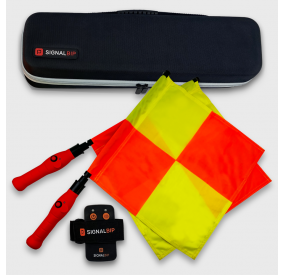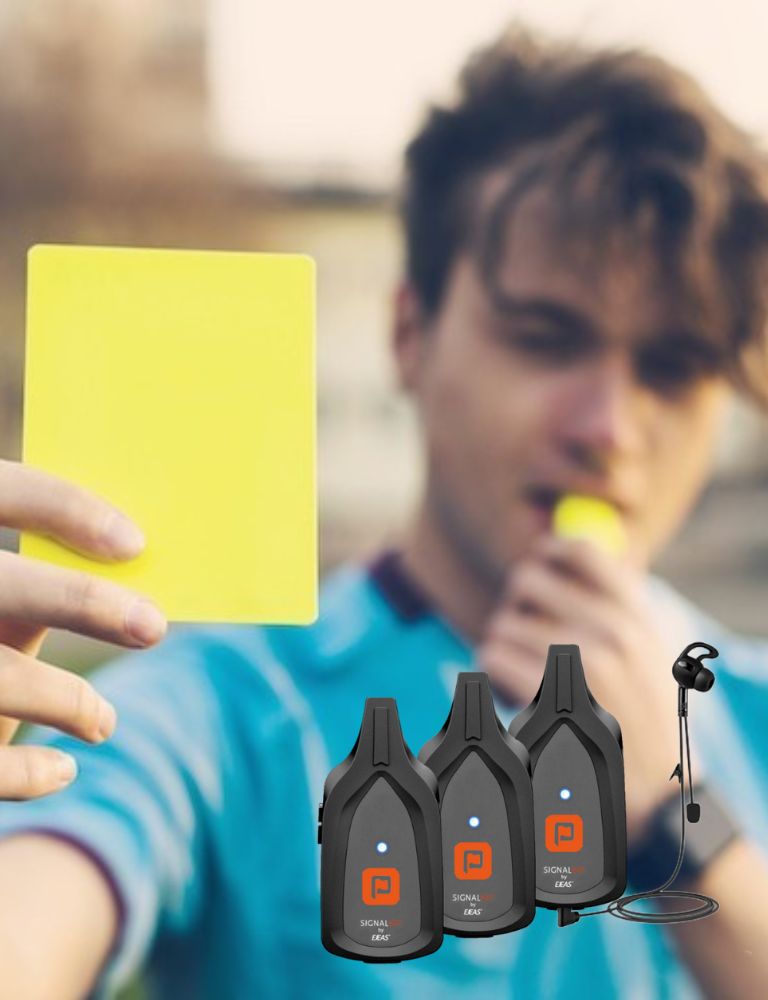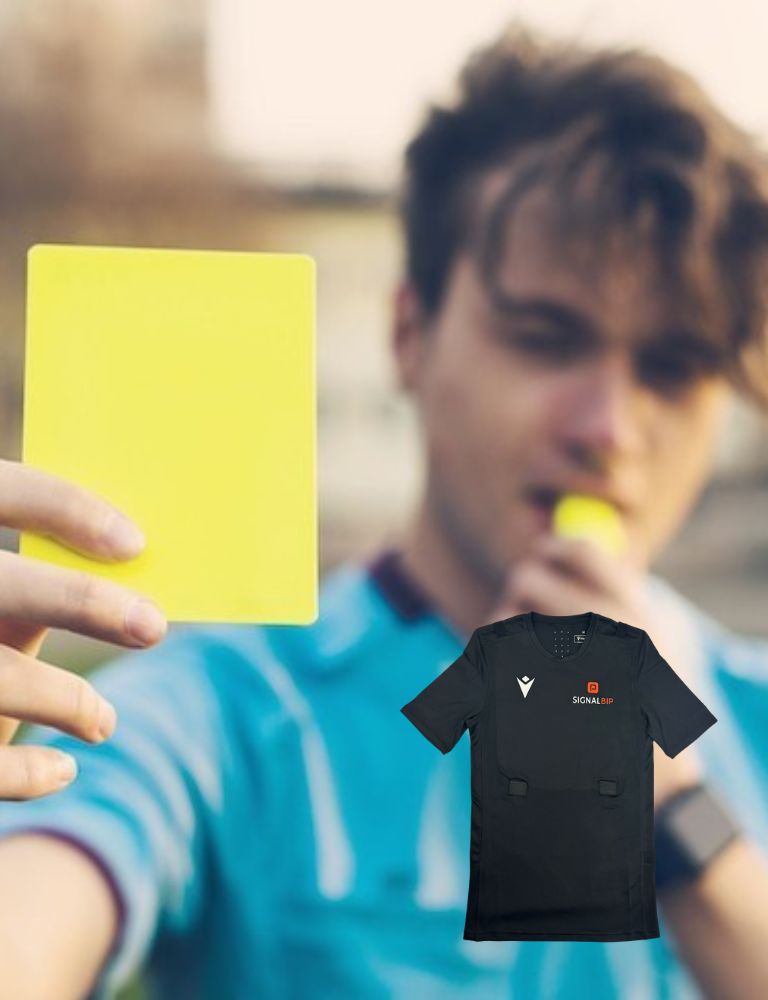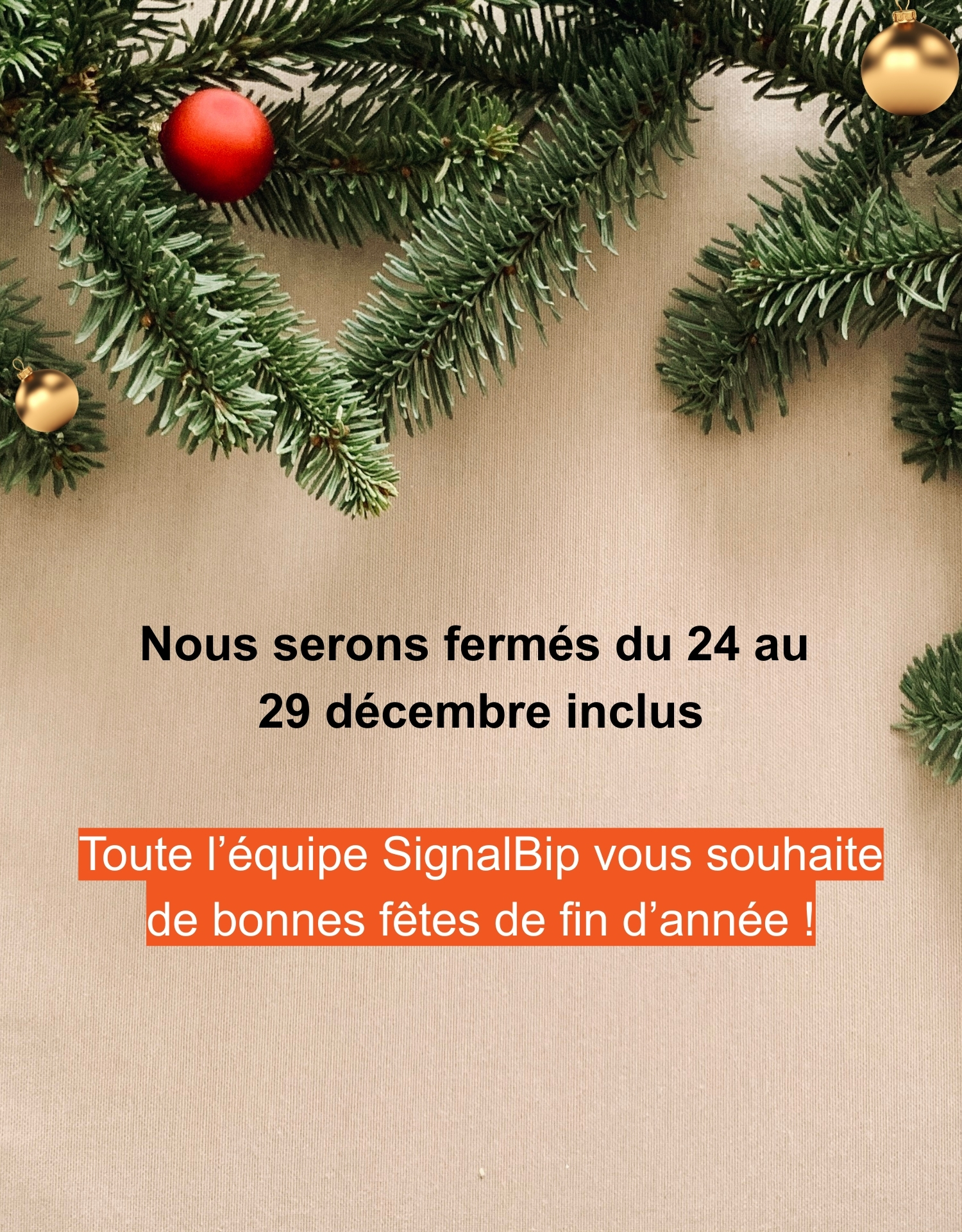


Profitez de notre promotion sur les KITS AUDIO
Offre valable du 1er octobre au 31 décembre 2025

Parfait pour glisser le récepteur de votre kit de drapeaux, le module de communication audio, votre GPS ... en évitant les multiples brassards !!

*Offre valable du 1er Octobre au 31 Décembre 2025

Parfait pour glisser le récepteur de votre kit de drapeaux, le module de communication audio, votre GPS ... en évitant les multiples brassards !!

Grâce aux drapeaux électroniques d'aide à l'arbitrage et grâce aux oreillettes Bluetooth professionnelles, l'arbitrage devient encore plus efficace.

La crédibilité de l'arbitre central est renforcée car les fautes lui sont immédiatement signalées. Par conséquent, les fautes sont moins discutables et il y a moins de tensions autour du terrain.

Les interruptions de jeu intempestives sont moins fréquentes grâce à la communication bidirectionnelle entre l’arbitre central et les arbitres de touche.

Les drapeaux électroniques permettent à l'arbitre central de ne rater aucune action ou faute et d’être averti en cas de faute détectée par un de ses arbitres assistants (anciennement aussi appelés juges de touche ou juges de lignes).
Nous pouvons affirmer sans nous tromper que les progrès de la science et de la technologie ont énormément changé nos vies. L'arbitrage n'a pas été à l'abri de ces grands bouleversements ; il en a même énormément profité. Avec le drapeau de touche électronique, l’époque où l’arbitre pouvait ne pas voir une faute signalée par l'un de ses assistants est terminée. Les kits de drapeaux électroniques pour l'arbitrage ont permis de simplifier la communication entre les arbitres assistants (anciennement arbitres de touche) et l'arbitre central, et ainsi de fluidifier le jeu sur le terrain. Ils ont été utilisés pour la première fois lors de compétitions officielles lors des matchs de football des Jeux Olympiques d'Atlanta en 1996, et n'ont cessé depuis d'évoluer grâce aux retours d'expériences des arbitres. L'électronique permet à l'arbitre assistant de signaler à l'arbitre central son geste lorsqu'il lève son drapeau et appuie sur le bouton pour signaler une faute. L'arbitre central reçoit alors le signal (son et/ou vibration) sur son récepteur placé sur son bras, et peut déterminer lequel de ses assistant l'avertit grâce à des signaux différents.
Découvrez également notre gamme d' oreillette bluetooth professionnelle.
Depuis quelques années, l’arbitrage a vécu de grands changements. En effet, la montée de la violence dans les stades et événements sportifs en général ainsi que les progrès technologiques dans le domaine ont fortement impacté le secteur du sport. L’arbitre peut alors être, à tort ou à raison, pointé du doigt comme « responsable » d’une sanction illégitime.
La pression est grandissante pour l’arbitre central qui doit s’assurer de bien identifier les irrégularités du jeu à temps. La communication entre l’arbitre central et les arbitres assistants doit être fluide et instantanée. Sur un terrain de sport, avec le bruit des supporters et la rapidité des actions, l'arbitrage peut être compromis et le développement des moyens audio et télévisuels ont rendu chaque décision d’arbitrage plus lourde encore. L'électronique permet une fluidité de la communication entre l'équipe arbitrale. L'arbitre central sait immédiatement de quel côté tourner la tête pour voir la faute et se rendre sur l'action en cours.
Le drapeau de touche électronique est un système utilisé pour attirer l’attention de l’arbitre central. Il se montre particulièrement utile dans les situations de hors-jeu, de faute hors du champ de vision de l’arbitre mais également lorsque les décisions peuvent être délicates.
Par exemple, si un arbitre assistant constate une faute sur le terrain, il consulte tout d’abord l’arbitre central par le regard pour voir s’il a pris une décision. Si ce n’est pas le cas, il peut l’informer en levant son drapeau et en appuyant sur le bouton d'alerte afin d'émettre un signal sonore électronique et/ou une vibration jusqu'à l'arbitre principal.
Les drapeaux électroniques sont conçus pour tous les arbitres, quelque soit leur sport ou leur niveau. Ils sont fréquemment utilisés lors des grands matchs internationaux ou à des évènements mondiaux tels que les Jeux Olympiques. Ils sont conçus pour une équipe arbitrale composée de 3 arbitres : 1 central et 2 assistants, ou de 4 arbitres : 1 central, 2 assistants, et un arbitre remplaçant (dit quatrième arbitre), ou de 6 arbitres : 1 central, 2 assistants, un remplaçant et 2 assistants supplémentaires (dits arbitres de surface).
Les drapeaux de touche électroniques rechargeables SignalBip permettent aux arbitres assistants de notifier les fautes des joueurs d’une simple pression accompagnant leur geste. Une alerte sonore ou un vibreur se déclenche alors sur le récepteur de l’arbitre central, ce qui lui permet de ne plus passer à côté d’une information importante.
La vibration ou le son (selon le mode choisi) permet même de savoir si l’alerte vient de l’un ou l’autre des arbitres de touche. Les drapeaux électroniques d’arbitrage ne laissent plus de place au doute et rendent l'arbitrage plus efficace. Les arbitres équipés du système de drapeaux électroniques SignalBip sont plus réactifs et plus sereins.










